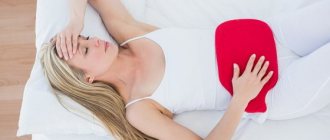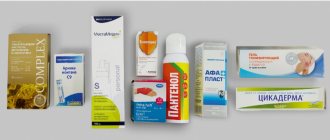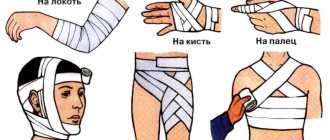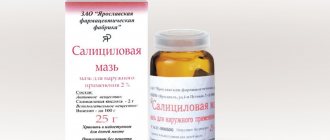Nonsteroidal anti-inflammatory drugs (NSAIDs) are one of the most popular pharmaceutical products. They are prescribed during the treatment of a number of diseases and conditions, often in entire courses. Even with clear instructions from the attending physician, many compatriots have doubts and look for information about drugs on the Internet. And then they come to the pharmacy and ask the pharmacist questions, hoping to justify their guesses or dispel doubts. In this situation, the head manager needs, on the one hand, to help the pharmacy visitor, and on the other hand, not to take on the role of a doctor. It is in this vein that we will cover the topic of topical NSAIDs today - in the form of competent answers to customer questions.
What does “when used correctly” mean? Anointed, and that’s it.
It is advisable to rub in topical forms of NSAIDs for a while rather than just apply them. The analgesic and anti-inflammatory effect of the ointment will be much higher if you do not just “anoint” it, but actively rub the product into the skin over the sore spot for some time. In the course of relevant studies, it was found that even 45 seconds of rubbing diclofenac diethylamine gel five times increased the transdermal delivery of the drug compared to simple application to the skin. And you need to remember that pain-relieving ointments based on NSAIDs act on areas of pain located immediately under the skin. If we talk about joints, then these are the knees, elbows and small joints of the hands. The local form most likely “will not reach the hip joint.” It should be rubbed “around the circumference” of the limb, for example, not only into the dorsum, but also into the palmar surface of the interphalangeal joint [6, 7].
Symptoms of inflammation of the trigeminal nerve
Experts include short-term, but acute and intense pain in different parts of the head as the main symptoms of facial neuralgia. Shooting attacks spread over the entire surface of the face - lips, eyes, nose, upper and lower jaw, gums and tongue.
Patients also report the following symptoms:
- Metallic taste in the mouth
- Muscle weakness
- 2-3 days before facial expressions are affected, pain occurs behind the outer ear, spreading to the face, back of the head and eyes
- Facial asymmetry
- Inability to close the eye on the affected side
- Drooping corner of the mouth
- Dry mouth
- Slurred speech
- Cross-eyed strabismus
- Uncontrollable tearing
- Disorders of taste buds
- Increased drooling
- Facial muscle spasms
- Increased or decreased facial sensitivity
- Temperature increase
Due to discomfort and pain, the patient begins to develop a phobia and increased anxiety. He tries to avoid poses and movements that provoke discomfort.
Which topical NSAID is best?
Everything is individual. If the analgesic effect of oral and injectable forms of NSAIDs can be more or less ranked, then an objective comparative assessment of topical drugs is very difficult. The reason for this is that, along with the actual active substance, the intensity of rubbing, excipients (for example, dimethyl sulfoxide) and the placebo effect play a significant role. Most studies on the effectiveness of topical NSAIDs have focused on diclofenac and ketoprofen. The increased attention to them is due to the fact that diclofenac is the only NSAID whose topical forms are approved by the American Food and Drug Administration (FDA), and ketoprofen, accordingly, is approved in most other countries of the world. Reliable data comparing these two drugs with each other have not yet been published. No one questions the effectiveness of other non-steroidal anti-inflammatory drugs for external use (ibuprofen, phenylbutazone, piroxicam, nimesulide, etc.); each of them was the subject of several clinical trials at one time, but the geography of their use is much more modest and is often limited to a few developing countries [2, 8].
Do excipients in the local form of NSAIDs matter?
Yes, they improve skin permeability and perhaps enhance the therapeutic effect in a certain way. In separate studies, for example, topical formulations of diclofenac with dimethyl sulfoxide (DMSO) and diclofenac diethylamine 1.16% have been shown to penetrate the skin faster than “regular” diclofenac sodium gels. In addition, DMSO itself may have a slight anti-inflammatory effect. There is no solid evidence of an increase in the analgesic effect due to the listed supplements, but their use at least helps to overcome the individual characteristics of the skin [7, 9–11].
Chondroprotectors and intra-articular fluid substitutes
Artra, Dona, Structum, Teraflex, Chondroitin, Glucosamine, Adgelon, Piaskledin, Alflutop, Hyaluronic acid, Sinvisc, Ostenil, Noltrex, Sinocrom, Fermathron
Chondroprotectors are medications that heal joints. We use them if the nutrition of the joint is impaired (arthrosis, osteochondrosis, metabolic disorders), or the joint has been damaged by inflammation or injury. We begin full treatment with chondroprotectors after the inflammation has subsided.
Treatment with chondroprotectors for oral administration should be long-term : the effect usually begins after 3 months, and a stable effect - after at least 6 months. These medications are specifically designed for long-term use and are usually well tolerated.
Chondroprotectors for injection into a joint or intramuscularly have a faster effect, sometimes noticeable after 1 injection. In total, we perform from 1 to 5 intra-articular or 10-20 intramuscular injections per course, followed by a transition to taking drugs orally.
Injections create a high concentration of medication directly into the affected joint
Chondroprotectors help work and medications that improve blood circulation and metabolism .
Chondroprotectors for oral administration. Commonly used medications.
Piascledine is a herbal preparation that regulates metabolism in cartilage tissue. Contains unsaponifiable compounds from avocado and soybean oils. The drug helps slow down the development of the degenerative process in cartilage tissue, relieves pain (associated with this process) and restores the patient’s motor function. Stimulates the synthesis of proteoglycans and collagen. Promotes the restoration of cartilage tissue. Reduces collagenase production.
Chondroitin and/or Glucosamine are contained in the preparations Artra, Dona, Structum, Teraflex.
Chondroitin , a drug that affects phosphorus-calcium metabolism in cartilage tissue , is a high molecular weight mucopolysaccharide. Slows down the destruction of bone tissue and reduces calcium loss, accelerates the process of bone tissue restoration, and inhibits the process of degeneration of cartilage tissue. Prevents compression of connective tissue and plays the role of a kind of lubricant of articular surfaces. When used externally, it slows down the progression of osteoarthritis. Normalizes metabolism in hyaline tissue. Stimulates the regeneration of articular cartilage.
Glucosamine is a drug that affects metabolism in cartilage tissue. Replenishes the natural deficiency of glucosamine, stimulates the synthesis of proteoglycans and hyaluronic acid in synovial fluid; increases the permeability of the joint capsule, restores enzymatic processes in the cells of the synovial membrane and articular cartilage. Promotes fixation of sulfur during the synthesis of chondroitinsulfuric acid, facilitates normal calcium deposition in bone tissue, inhibits the development of degenerative processes in joints, restores their function and reduces pain. With a single oral administration of an average therapeutic dose, the maximum concentration in plasma is achieved after 3-4 hours, in the synovial fluid - after 4-5 hours.
Injectable drugs and intra-articular fluid substitutes. Frequently used drugs.
Adgelon is a drug that stimulates the process of regeneration of cartilage tissue. The active substance of the drug is a glycoprotein isolated from cattle blood serum. The drug promotes the rapid accumulation of mass of young cartilage cells and their differentiation, which leads to more rapid formation of replacement cartilage tissue, restoration of a smooth articular surface in the area of damage and improved joint mobility. When using the drug, the damaged area is filled with young cartilage cells. With intra-articular injections , the basic substance produced by the cells of cartilage tissue has a more ordered structure: it becomes as dense as in normally functioning cartilage tissue.
Alflutop is an injection drug of natural origin. This is a bioactive concentrate from small sea fish Sprat (Sprattus sprattussprattus), Black Sea whiting (Odontogadus merlangus euxinus), Black Sea bellyfish (Alosa tanaica nordmanni), Black Sea anchovy (Engraulis encrassicholusponticus). The drug Alflutop regulates metabolism in cartilage tissue, consists of mucopolysaccharides, chondroitin sulfate, amino acids, peptides, sodium ions, potassium, calcium, magnesium, iron, copper and zinc. Alflutop prevents the destruction of macromolecular structures of normal tissues, stimulates restoration processes in interstitial tissue and articular cartilage tissue, which explains its analgesic effect. The anti-inflammatory effect of Alflutop and tissue regeneration are based on inhibition of hyaluronidase activity and normalization of hyaluronic acid biosynthesis. These effects are synergistic and cause activation of tissue restoration processes (in particular, restoration of metabolic processes in cartilage tissue).
100% synthetic polymer Noltrex does not contain substances of animal origin and is not a natural metabolite. Due to the presence of silver ions in the composition of the drug, Noltrex has antibacterial properties. When Noltrex is administered at the first stage, physical separation of the contacting and rubbing surfaces of the joint affected by osteoarthritis occurs as a result of an increase in the viscosity of the synovial fluid. Pain is reduced and joint mobility is improved. At the second stage, due to the unique properties of Noltrex, like a sponge, it absorbs joint fluid and water from the cartilage and subchondral bone, providing decompression of pain endings. At the third stage, biochemical fragments of the joint fluid - enzymes of inflammation and proteolysis - are adsorbed and inactivated on strictly oriented active centers of the polymer. At the same time, silver ions migrate to the surface of the joint, resulting in the suppression of endogenous infection. Noltrex is one of the most easily used means of combating arthrosis today. The entire process of using the drug comes down to a common and very widespread procedure - intra-articular injection, which does not require any additional skills from the doctor.
Substitutes for intra-articular fluid are hyaluronic acid preparations (Synvisc, Ostenil, Sinokrom, Fermatron). The therapeutic effect of Hyaluronic acid is associated with “replenishing the viscosity” of the intra-articular fluid of the affected joint. In addition, the action of sodium hyaluronate is based on the “trigger” effect - it directly restores the ability of the joint to produce hyaluronan and, thus, returns it to a state of biochemical equilibrium, which persists for several months. As accumulated clinical materials show, the following points occur when using sodium hyaluronate:
- restores synovial balance: increases the viscosity of synovial fluid, restoring its lubricating, shock-absorbing and filtering properties;
- protects articular cartilage from mechanical and chemical damage: restores the protective coating on the inner surface of the joint and increases the binding of free radicals;
- inflammation of the synovial membrane decreases and its protective functions are restored.
Slowing down the destruction of articular cartilage in combination with the processes of restoring the biochemical balance of the synovial fluid leads to rapid relief of pain symptoms and regression of the phenomena of limited mobility in the joint.
The beneficial effect of sodium hyaluronate appears gradually during the course and lasts for several months. After completing a full course of 5 injections, symptoms are usually relieved for a period of 6 to 12 months.
Can I take NSAID tablets and use the topical form at the same time?
This is not directly prohibited by the instructions for use, but it is not recommended, and, apparently, does not make sense. According to the only credible study on this topic, there was no significant increase in the analgesic effect when combining local and systemic forms of NSAIDs. At the same time, this use of drugs slightly increased the frequency of rectal bleeding. In clinical trials, oral administration of diclofenac and ibuprofen at doses 2 and 3 times higher than recommended also did not lead to increased pain relief. The effect of a combination of tablets and a topical form of NSAIDs will most likely not be pronounced. At the same time, the likelihood of unwanted reactions slightly increases. Therefore, this combination is not recommended. Usually, if a local remedy does not help, the doctor cancels it and transfers the patient to oral administration [12, 13].
Is it possible to use topical NSAIDs for stomach erosions or ulcers?
According to the instructions, it can be done “with caution.” The concentration of the active substance in the blood plasma after the use of topical NSAIDs is less than 10% of that achieved by oral administration. The incidence of adverse reactions from the gastrointestinal tract when using local forms of NSAIDs does not differ from that when rubbing placebo and is significantly lower than when using systemic agents. However, just in case, these drugs are not recommended to be applied to the skin during gastrointestinal bleeding and exacerbation of gastric or duodenal ulcers [5, 14].
Diagnosis of inflammation of the trigeminal nerve
Depending on the affected area and the set of symptoms, the strategy for diagnosing the disease is determined. To determine the location of nerve damage, the severity and dynamics of recovery, doctors prescribe a hardware diagnostic method, for example, electromyography. MRI and CT scans are used to determine the presence of tumors in the brain.
The patient may also be referred for a general or biochemical blood test, x-ray of the lungs, ultrasound of soft tissues or ophthalmoscopy.
You can be confident in the quality of the procedures performed in the clinic and the high accuracy of the results of MRI, CT and other methods of diagnosing various diseases. Medunion performs magnetic resonance imaging of all types: head, spine, abdominal cavity and joints using modern equipment.
How many times a day and for how long can you apply such drugs?
Typically three to four times a day for two weeks. Topical NSAIDs act quite quickly - the effect occurs within an hour - and help control acute somatic pain of moderate intensity. They cope worse with chronic pain. If there is no effect within two weeks of proper use, you should consult a doctor. There is a chance that he will recommend switching to oral forms or another group of drugs.
Sources
- Derry S, Conaghan P, Da Silva JA, et al. Topical NSAIDs for chronic musculoskeletal pain in adults. Cochrane Database Syst Rev. 2016; 4: CD007400. https://www.cochranelibrary.com/cdsr/doi/10.1002/14651858.CD007400.pub3/full
- Derry S, Wiffen PJ, Kalso EA, et al. Topical analgesics for acute and chronic pain in adults – an overview of Cochrane Reviews. Cochrane Database Syst Rev. 2017; 5: CD008609. https://www.cochranelibrary.com/cdsr/doi/10.1002/14651858.CD008609.pub2/full
- Klinge SA, Sawyer GA. Effectiveness and safety of topical versus oral nonsteroidal anti-inflammatory drugs: a comprehensive review. Phys Sportsmed. May 2013; 41(2): 64–74. https://www.ncbi.nlm.nih.gov/pubmed/23703519
- Kloppenburg M, Kroon FP, Blanco FJ, et al. 2021 update of the EULAR recommendations for the management of hand osteoarthritis Annals of the Rheumatic Diseases 2019; 78: 16–24. https://ard.bmj.com/content/78/1/16
- Honvo G, Leclercq V, Geerinck A, et al. Safety of Topical Non-steroidal Anti-Inflammatory Drugs in Osteoarthritis: Outcomes of a Systematic Review and Meta-Analysis. Drugs Aging. 2019; 36(Suppl 1): 45–64. https://www.ncbi.nlm.nih.gov/pmc/articles/PMC6509095/
- Hasler-Nguyen N, Fotopoulos G. Effect of rubbing on the in vitro skin permeation of diclofenac-diethylamine 1.16% gel. BMC Res Notes. 2012 Jun 21; 5: 321. https://www.ncbi.nlm.nih.gov/pmc/articles/PMC3424122/
- Hagen M, Baker M. Skin penetration and tissue permeation after topical administration of diclofenac. Curr Med Res Opin. 2021 Sep; 33(9):1623–1634. https://www.tandfonline.com/doi/full/10.1080/03007995.2017.1352497
- Rafanan BS Jr, Valdecañas BF, Lim BP, et al. Consensus recommendations for managing osteoarthritic pain with topical NSAIDs in Asia-Pacific. Pain Manag. 2018; 8 (2): 115–128. https://www.futuremedicine.com/doi/10.2217/pmt-2017-0047?url_ver=Z39.88-2003&rfr_id=ori:rid:…
- Pradal J, Vallet CM, Frappin G, Bariguian F, Lombardi MS. Importance of the formulation in the skin delivery of topical diclofenac: not all topical diclofenac formulations are the same. J Pain Res. 2019; 12: 1149–1154. https://www.dovepress.com/importance-of-the-formulation-in-the-skin-delivery-of-topical-diclofen-pee…
- Galer BS. A comparative subjective assessment study of PENNSAID® and Voltaren Gel®, two topical formulations of diclofenac sodium. Pain Pract. 2011; 11 (3): 252–60. https://onlinelibrary.wiley.com/doi/abs/10.1111/j.1533-2500.2010.00420.x
- Tieppo Francio V, Davani S, Towery C, Brown TL. Oral Versus Topical Diclofenac Sodium in the Treatment of Osteoarthritis. J Pain Palliat Care Pharmacother. 2021 Jun; 31 (2): 113–120. https://www.tandfonline.com/doi/abs/10.1080/15360288.2017.1301616?journalCode=ippc20
- Simon LS, Grierson LM, Naseer Z, et al. Efficacy and safety of topical diclofenac containing dimethyl sulfoxide (DMSO) compared with those of topical placebo, DMSO vehicle and oral diclofenac for knee osteoarthritis. Pain. 2009; 143(3):238–45. https://insights.ovid.com/article/00006396-200906000-00016
- Van Amburgh J. Can Topical and Oral NSAIDs Be Combined for Pain Relief? Medscape. https://www.medscape.com/viewarticle/861740
- Roth SH. Nonsteroidal anti-inflammatory drug gastropathy: new avenues for safety. Clin Interv Aging. 2011; 6: 125–31. https://www.ncbi.nlm.nih.gov/pmc/articles/PMC3131982/
- Kowalski ML, Makowska JS, Blanca M, et al. Hypersensitivity to nonsteroidal anti-inflammatory drugs (NSAIDs) – classification, diagnosis and management: review of the EAACI/ENDA and GA2LEN/HANNA. Allergy 2011; 66:818–829. https://www.eaaci.org/attachments/668_Kowalski%20Hypersensitivity%20to%20nonsteroidal%20anti-inflamm…
- Rogers NV, Rowland K. An alternative to oral NSAIDs for acute musculoskeletal injuries. J Fam Pract. Mar 2011; 60 (3): 147–8. https://www.ncbi.nlm.nih.gov/pmc/articles/PMC3183960/




![Rice. 2. Relationship between dose of diclofenac (D), naproxen (Nap) and etoricoxib (Eto) and effect size in osteoarthritis [3]](https://ms-pi.ru/wp-content/uploads/ris-2-zavisimost-mezhdu-dozoj-diklofenaka-d-naproksena-nap-i-330x140.jpg)



